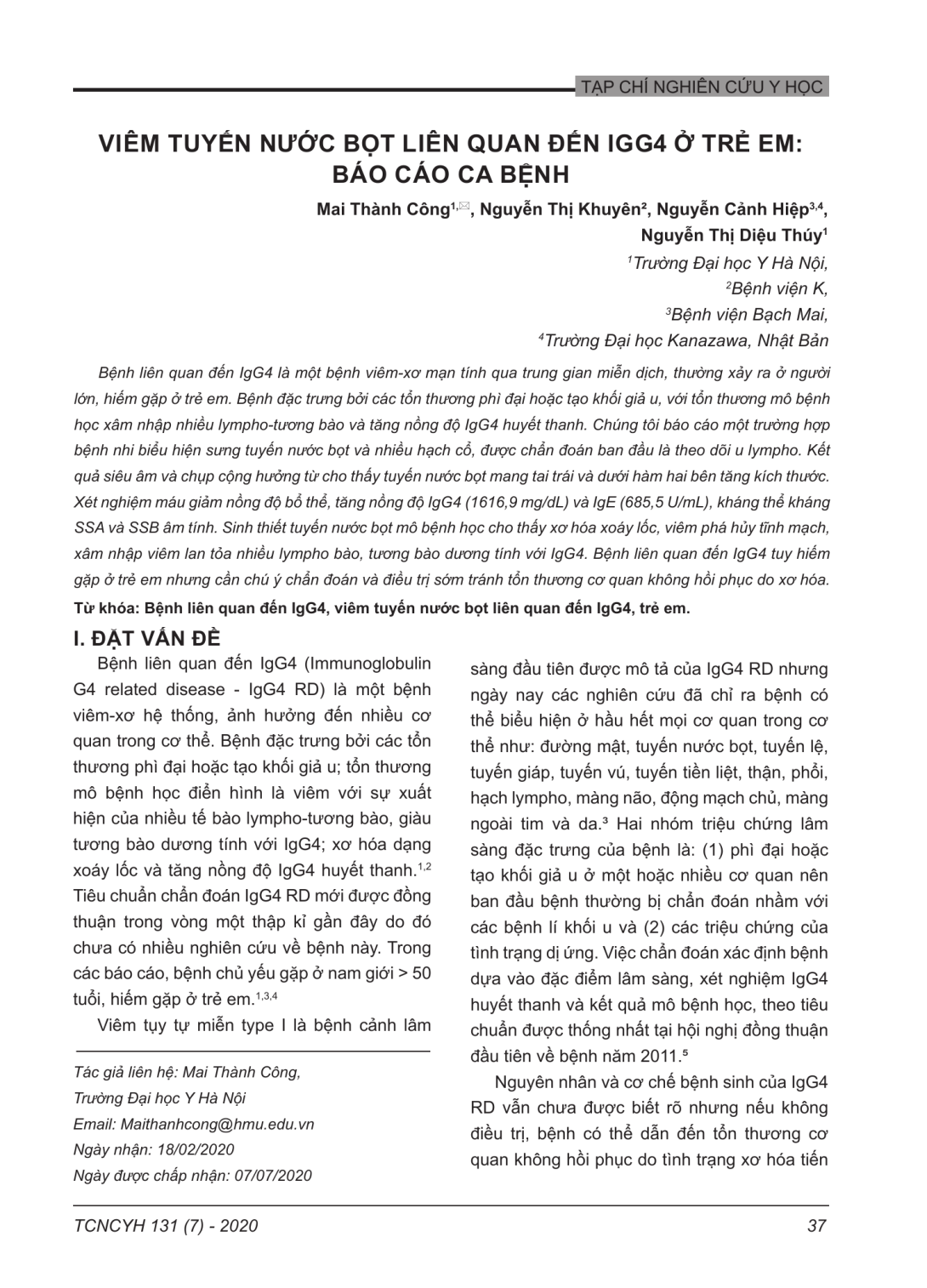
Bệnh liên quan đến IgG4 là một bệnh viêm-xơ mạn tính qua trung gian miễn dịch, thường xảy ra ở người lớn, hiếm gặp ở trẻ em. Bệnh đặc trưng bởi các tổn thương phì đại hoặc tạo khối giả u, với tổn thương mô bệnh học xâm nhập nhiều lympho-tương bào và tăng nồng độ IgG4 huyết thanh. Chúng tôi báo cáo một trường hợp bệnh nhi biểu hiện sưng tuyến nước bọt và nhiều hạch cổ, được chẩn đoán ban đầu là theo dõi u lympho. Kết quả siêu âm và chụp cộng hưởng từ cho thấy tuyến nước bọt mang tai trái và dưới hàm hai bên tăng kích thước. Xét nghiệm máu giảm nồng độ bổ thể, tăng nồng độ IgG4 (1616,9 mg/dL) và IgE (685,5 U/mL), kháng thể kháng SSA và SSB âm tính. Sinh thiết tuyến nước bọt mô bệnh học cho thấy xơ hóa xoáy lốc, viêm phá hủy tĩnh mạch, xâm nhập viêm lan tỏa nhiều lympho bào, tương bào dương tính với IgG4. Bệnh liên quan đến IgG4 tuy hiếm gặp ở trẻ em nhưng cần chú ý chẩn đoán và điều trị sớm tránh tổn thương cơ quan không hồi phục do xơ hóa.
IgG4 related disease (IgG4RD) is a chronic fibro-inflammatory and immune-mediated disease mainly reported in adults but rarely in children. The disease is characterized by swelling or pseudotumoral lesions, with pathologically lymphoplasmocytic infiltration and high serum IgG4 concentration. We report a case in children with swelling of salivary glands and cervical lymphadenopathy for a year, initially suggesting lymphoma. Ultrasound and magnetic resonance imaging (MRI) revealed the enlargement of the left parotid gland and the submandibular glands. Hypocomplementemia and increased serum IgG4 (1616.9 mg/dL) and IgE (685.5 U/mL) concentrations were found. Anti-SSA and anti-SSB antobidies were negative. Histopathology of the salivary gland showed dense lymphoplasmacytic infiltrate with abundant IgG4-positive plasma cells, storiform fibrosis and obliterative phlebitis. Although IgG4RD is rare in children, clinicians should pay attention to the early diagnosis and treatment in order to avoid fibrosis and irreversible organ damage.
- Đăng nhập để gửi ý kiến
